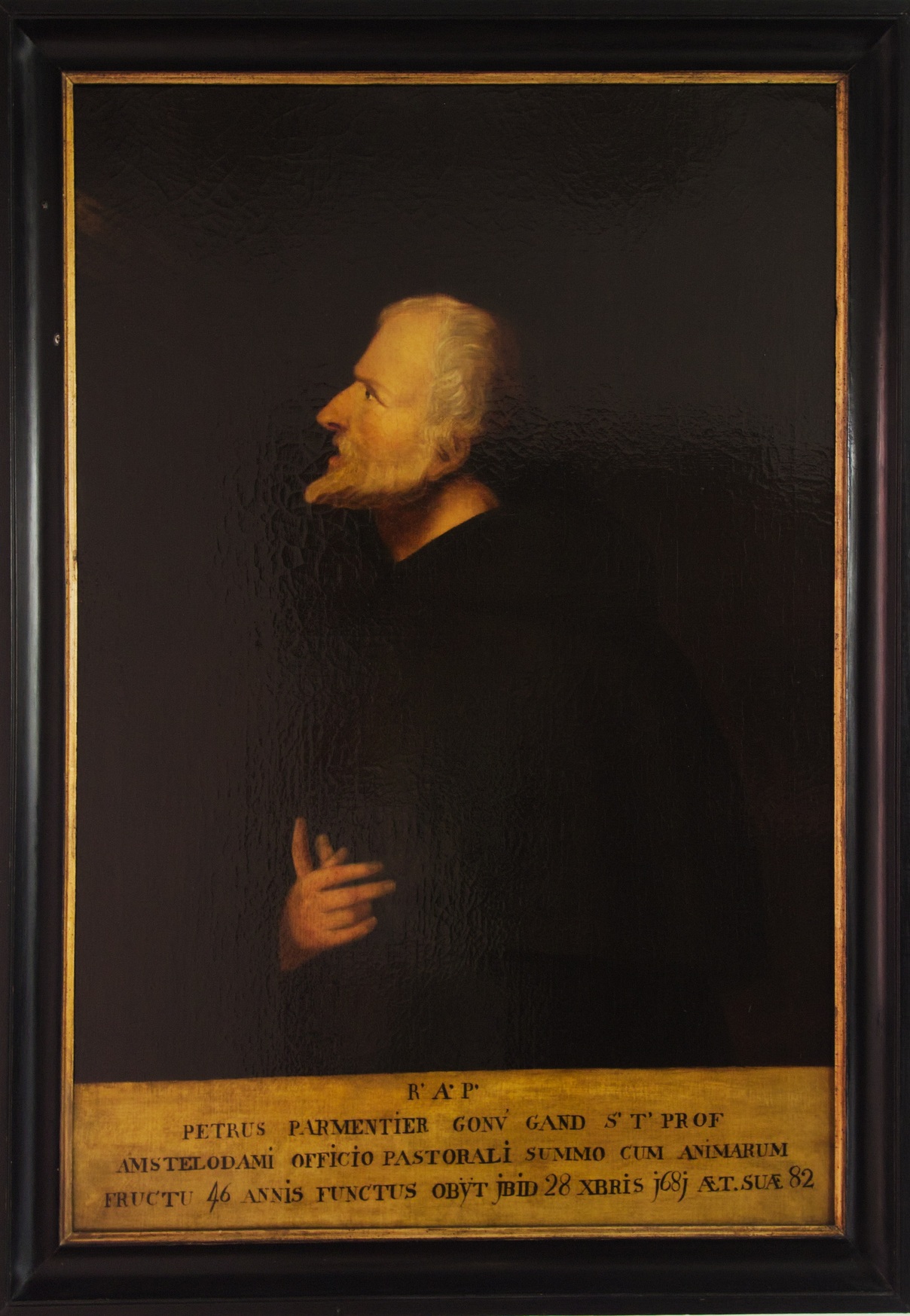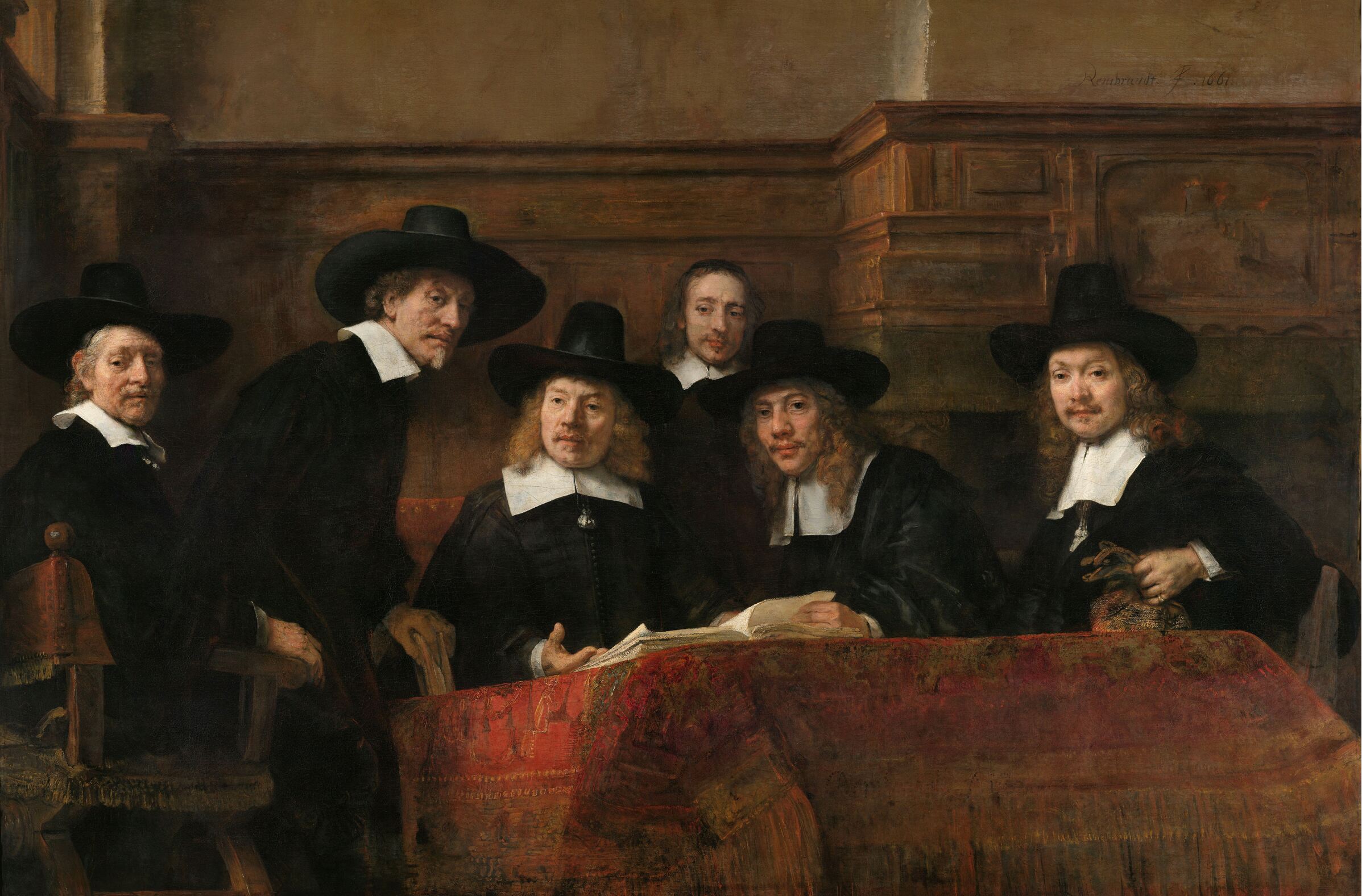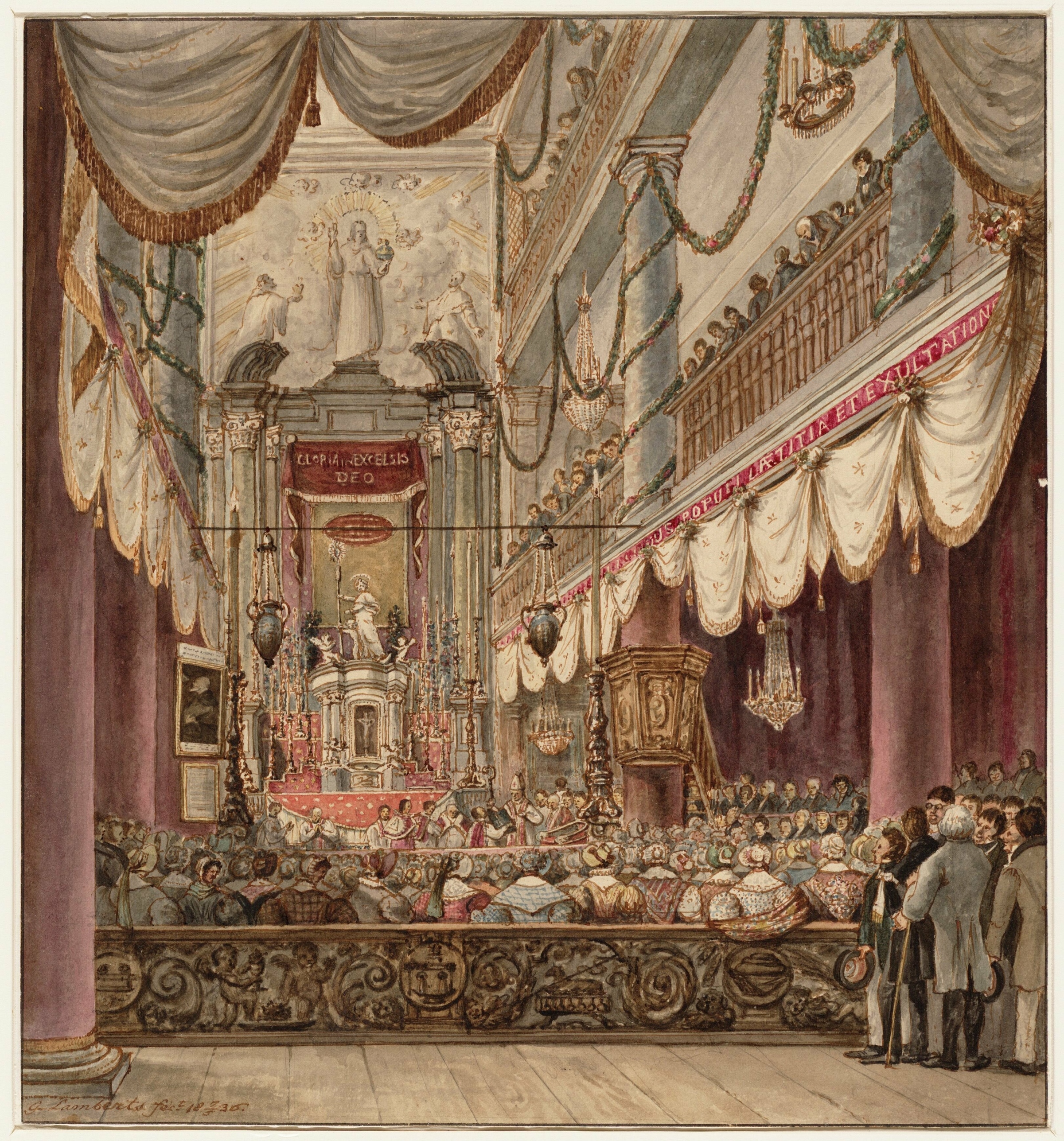On April 10, 1636, the Flemish Father Petrus Parmentier sees Amsterdam appear on the horizon. He is dressed as an ordinary civilian and carries with him only the bare necessities.
Location
Ste Ster
Spinhuissteeg 2
Type
Hidden church
Religious community
Roman Catholic Church
Object
Portrait of the priest Petrus Parmentier in the black habit of the Augustinian order.
Maker and date
Maker unknown
ca. 1681
Visit
The portrait is on display in the permanent exhibition of the Our Lord in the Attic Museum
"If all the papists were like Parmentier, the Geuzen would be far from here"
In this portrait, the Catholic priest Petrus Parmentier (1602–1681) is depicted in the black habit of his Augustinian monastic order. This is remarkable, because as a missionary in Protestant Amsterdam, he was never able to wear it.
Before Parmentier was sent to Amsterdam by his superior, he was a professor of theology and subprior at his monastery. With his departure for Amsterdam, he permanently said farewell to the monastic life, which he had chosen at the age of 21. When he arrived in the city in 1636, there were no longer any Catholic churches or monasteries, and practicing the Catholic faith was officially forbidden. He must carry out his priestly duties in different homes of fellow believers and dressed as a civilian to avoid being recognised as a priest.
During his life in Amsterdam, Parmentier befriended the wealthy Catholic cloth merchant Jacob van Loon (1595–1674). In 1670, Parmentier moved into De Ster, a warehouse recently converted into a hidden church by Van Loon. The closeness of their relationship became apparent when Parmentier was buried in 1681 in the same grave as Van Loon in the Nieuwe Kerk. A mission report notes that his death is mourned by everyone, and even non-Catholics are convinced of the sanctity of his life. At his death, he left behind a church community of about one thousand Catholics.
hidden church
Building in which hidden religious services were held in the Dutch Republic (1588-1795). Christian denominations outside the Calvinist church, such as Catholics, Lutherans, Mennonites and Remonstrants, had to practice their religions in hidden churches.
Subprior
The person who, under the prior, is in charge of a monastic community and replaces him.
Augustinians
Roman Catholic monastic order. The order originated in Italy in the 13th century. Its origins lay with laypeople and clergy living in poverty, who in remote areas devoted themselves to prayer and preaching. Like the Franciscans, the Dominicans, and the Carmelites, the Augustinians formed a so-called mendicant order: they did not support themselves but lived on donations. The Augustinians have made significant contributions to theology and Catholic education.
Habit
The clothing worn by monks, nuns, and others in religious orders. Religious orders often have habits in their own style and colour. Their members can therefore be recognised by their habit.
In 1836, 200 years after his arrival in Amsterdam, Parmentier was honorably commemorated in the hidden church De Ster. His portrait was prominently hung on a pillar opposite the pulpit. This tribute is still clearly visible in a preserved lithograph. While De Ster has been demolished, the portrait has been preserved and hangs in the Our Lord in the Attic Museum, where Petrus Parmentier was pastor between ca. 1661 and 1670.
Pieter-Jan van Giersbergen
Curator Collections Our Lord in the Attic Museum
Last edited
August 12, 2025
Portret van Petrus Parmentier, unknown maker, ca. 1681, olieverf op doek, 110 x 75 cm. Collection Our Lord in the Attic Museum.
Exterior: photography Robert Westera
The Sampling Officials of the Amsterdam Drapers’ Guild, known as ‘The Syndics’, Rembrandt, 1662, oil on canvas, 191,5 x 279 cm. Collection Rijksmuseum.
Gezicht in de r.k. kerk 'De Ster', bij gelegenheid van het 200-jarig bestaan van de statie, Gerrit Lamberts, 1836. Collection City Archives Amsterdam.
Anoniem, Derde eeuwfeest van de Paters Augustijnen in Amsterdam, 1636-1936 (Amsterdam 1936).
Boers, Thijs, 'De Missionaris Petrus Parmentier (1601-1681) en zijn geestelijke dochters' in: Jaarboek Amstelodamum 103 (Amsterdam 2011).
Boers, Thijs, e.a. ed., Museum Ons’ Lieve Heer op Solder (Amsterdam: Lectura Cultura 2015).
Dyck, L. van en Dijck, L. van, 'De Augustijnen in de Hollandse Zending, Gelderland, Limburg en Staats-Brabant (1623- 1853)' in: Augustiniana 17 (1967) 274–98.
Online sources
Pool, H.A., Bewening van Christus
Last visited 12-08-2025








